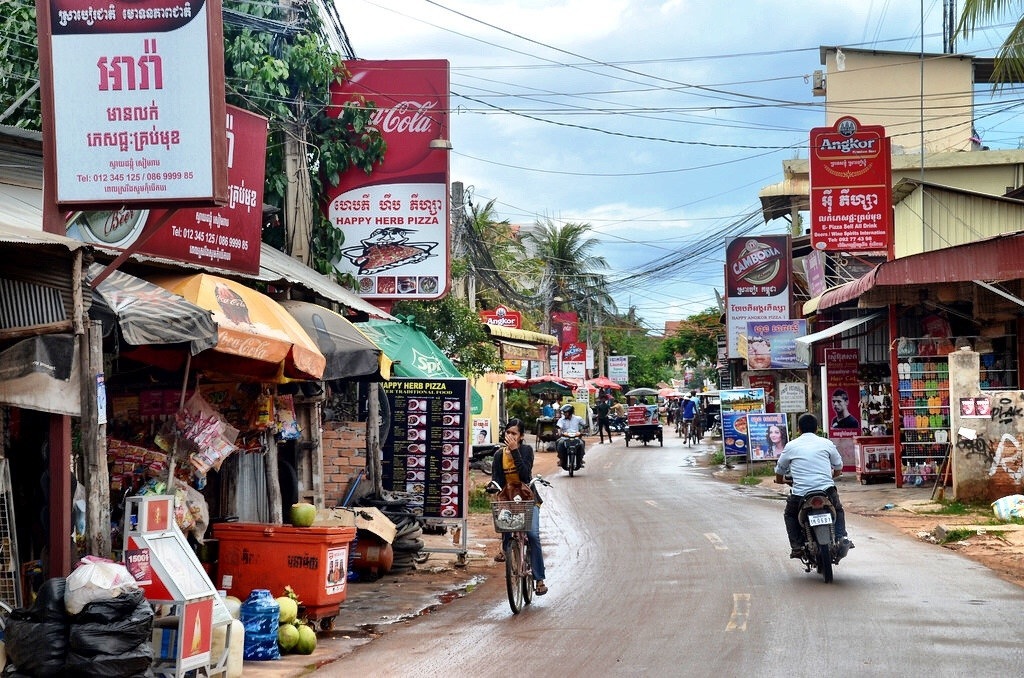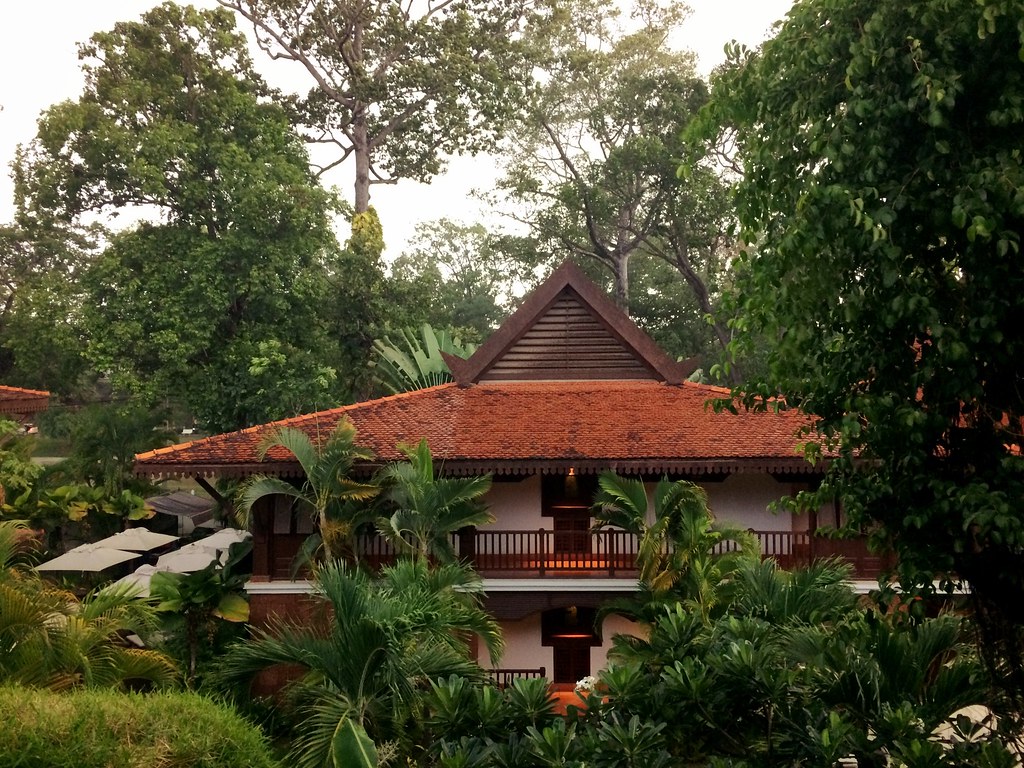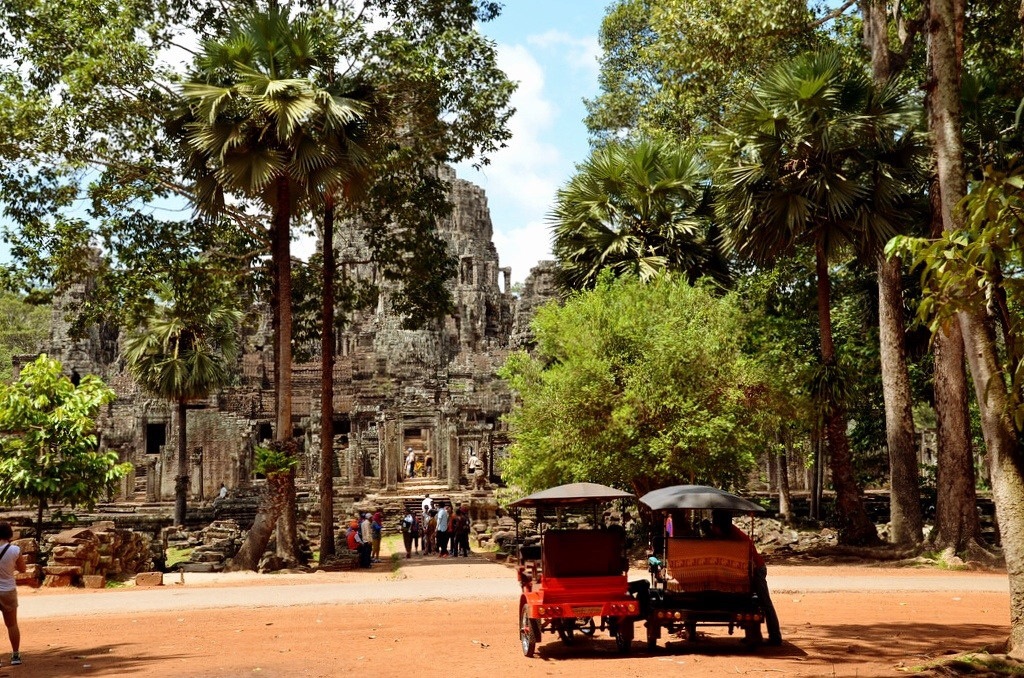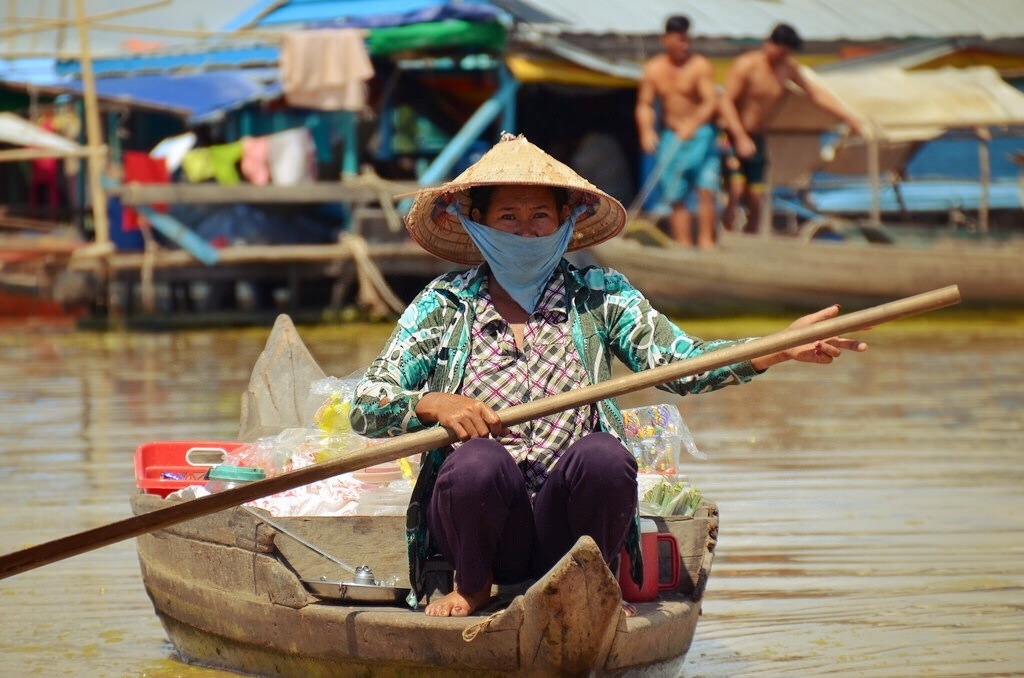
I recently had the opportunity to visit Cambodia, an easy flight on Dragonair from Hong Kong. Before even leaving Cambodia though, I knew that there were several details I wanted to share. Tidbits of information that could have helped me during my own stay in Siem Reap and tips that I hope will help you as you plan your own trip to this beautiful country. I have a lot more to say about my remarkable experiences in Cambodia, but I wanted to start with this more practical post.
1. Visas and cash – For U.S. residents, you do not need to apply for a visa in advance. You can get one upon arrival but you will need a passport sized photo and $20. Yes, that’s right you need to have a U.S. $20 bill in order to process the visa. It’s easy and only takes a few minutes, but make sure you have everything you need before you get there.
That gets me to something I really wish I knew. In Cambodia the currency is the riel. However, the Cambodian economy being what it is, locals prefer getting paid in dollars since they get more value from it than from their own currency. I made the mistake of exchanging a bunch of cash, losing money in the process, which I didn’t really need to do. Local restaurants and shops will accept riels, but it’s easier and ultimately cheaper for you to just use American currency. Do bring lower value bills though, lots of $1, $5 and $10 bills will serve you well. American coinage is not used, so try to have even transactions or you’ll be stuck with a lot of nearly useless riels.

2. Visiting temples – The most popular tourism spot in Cambodia is Siem Reap; home to the legendary Angkor Wat along with a host of other temples. It’s an impressive place and after a few days there I quickly understood the draw. There are though a few things you should know. While you can certainly tour the temples on your own, I strongly recommend hiring a driver and guide for the day, which your hotel can help arrange. The price is very reasonable and the guides are licensed and provide a lot of great information. It will also be hot and having an air conditioned car to take you from one site to the next instead of tuk-tuk is a nice perk. I think it’s also nice to pump money back into the local economy by hiring a guide, most of whom come from some pretty humble backgrounds. Regardless of whether you go solo or not though you will need a temple pass. For $20 for one day (prices vary if more days are purchased) you will have access to most of the area temples, including Angkor Wat. Each temple complex has guards checking the passes so don’t think you can sneak by without one. Your guide will take you to the ticket area where you need to once again have American currency with you as they process your pass.
It’s Southeast Asia so it will most likely be hot and humid when you go. Be sure to pack a small day bag with plenty of water, hats, sunscreen and even a clean shirt to change into after a long (and sweaty) day of sightseeing.

3. Rainy season isn’t that bad – I’d always avoided Asia during the rainy season, which is why I was a little concerned before my recent trip. But I quickly learned that there is a sharp difference between rainy season and monsoon season. Rainy season is just that, periods of rain every other day or so. While I visited it rained everyday, in the afternoon for no longer than 20 minutes or so. Of course this will vary, but it wasn’t the day-long downpour I had feared.

4. No need to excessively plan in advance – I’m a planner and am especially obsessive about it when I know I will be somewhere where I will need a lot of tours. I had planned all of my Siem Reaps tours from home, but as soon as I got there I saw that it wasn’t necessary. Perhaps this doesn’t hold true in the high season, but when I visited the hotel merely arranged the tour the day before I needed it done. There are many guides in the area and most are trained in the same sites and activities, so it’s easy to hire someone last minute. Not only that, but from my own experience traveling it’s much easier to see what there is to see and do after you arrive than in advance when you’re dependent on whatever information you can find online. Cambodia also enjoys a somewhat slower pace of life so you may feel the need to acclimate and relax a little more, something you can’t do if you over plan.

5. Spend more time – My three days spent in Siem Reap is actually the typical amount of time most tourists spend in this popular city. It’s enough time to see the temples, explore town and maybe even relax a little. But as with most places, more time always means a better experience. Luckily I managed to leave town one afternoon for a trip out to Tonle Sap, the famous and impressive UNESCO recognized lake and river system. Along the way though I passed through villages and met some of the local residents, each of whom greeted me with a broad smile. It was good for me to get out into the country and to see not how those involved with the tourist trade live, but how the average Cambodian lives and the experience was humbling. It’s for that and other experiences like it that make staying in Cambodia and exploring longer not only a nice thing to do, but an important one.
Is there anything you would like to know about traveling in Siem Reap, Cambodia?
This campaign was created and sponsored by Cathay Pacific Airways in partnership with iambassador. LandLopers retains all editorial control of what is published and as you know, I never shy away from honest commentary.
